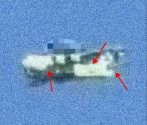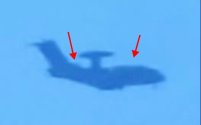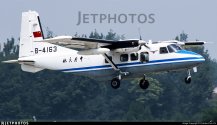You are using an out of date browser. It may not display this or other websites correctly.
You should upgrade or use an alternative browser.
You should upgrade or use an alternative browser.
PLA AEW&C, SIGINT, EW and MPA thread
- Thread starter Sczepan
- Start date
asif iqbal
Banned Idiot
whatever happened to the MA700 aircraft ? did the project die and if so why
A translated compilation of some comments by Cute Orca and @斯文的土匪-- on Weibo regarding the KJ-3000 from late-December 2024, with some help from Deepseek.
Some of the points likely aren't new/breaking.
1. Platform and Airframe:
- The KJ-3000 is based on the Y-20B transport aircraft platform, which has been upgraded with new (WS-20) engines.
- The WS-20 engines greatly improve fuel efficiency, reduce noise and potentially increase onboard power generation capacity.
- Utilizing the same Y-20B airframe as the other Y-20B variants reduces additional development and production costs, although direct conversion between the KJ-3000 and all other Y-20B variants is unlikely (or more like impossible).
- Utilizing the Y-20B platform also ensures cost efficiency and scalability in production, addressing past limitations seen in earlier AEW&C programs like the KJ-2000.
- The tail section of the KJ-3000 looks to have undergone significant design modifications to accommodate large equipment compartments.
2. Radar and Sensor Systems:
- The KJ-3000 features a massive dual-sided rotating phased array radar that likely operates in longer wavelengths (UHF/VHF?), which significantly enhances its anti-stealth capabilities.
- In addition to the main radar, the KJ-3000 fuselage is equipped with numerous additional antenna arrays lined on the sides and on top of the forward section of the fuselage for ECM and ESM purposes (e.g. EW and ELINT).
- A prominent equipment compartment spotted at the tail cone section of the KJ-3000 is likely housing a large EO sensor system, similar to the one seen on the KJ-700's nose.
- An equipment compartment in the front root of the KJ-3000's vertical stabilizer likely houses the satellite communication systems for the aircraft.
3. Capabilities and Features:
- The KJ-3000 is equipped with aerial refueling capability, which extends its operational range and endurance.
- The KJ-3000's design and features align with the broader trend of single-platform capability enhancement and greater degrees of system-level integration within the Chinese military aviation strategy.
- The advanced radar and sensor systems on the KJ-3000 provide enhanced situational awareness, particularly for anti-VLO warplane/missile operations.
- The blurred-out sections on the underside of the KJ-3000's fuselage in released photos likely point towards the presence of additional classified systems or antenna arrays.
4. Development and Production:
- The KJ-3000 development project was initiated in 2016 and took about 8 years to develop, making it the AEW&C aircraft with the second-longest development period in Chinese history after the KJ-700.
- The development of the radar systems on the KJ-3000 was led by Chief Designer Zhang Liang, who was also responsible for the development of the carrier-based KJ-600 AEW aircraft.




Some of the points likely aren't new/breaking.
1. Platform and Airframe:
- The KJ-3000 is based on the Y-20B transport aircraft platform, which has been upgraded with new (WS-20) engines.
- The WS-20 engines greatly improve fuel efficiency, reduce noise and potentially increase onboard power generation capacity.
- Utilizing the same Y-20B airframe as the other Y-20B variants reduces additional development and production costs, although direct conversion between the KJ-3000 and all other Y-20B variants is unlikely (or more like impossible).
- Utilizing the Y-20B platform also ensures cost efficiency and scalability in production, addressing past limitations seen in earlier AEW&C programs like the KJ-2000.
- The tail section of the KJ-3000 looks to have undergone significant design modifications to accommodate large equipment compartments.
2. Radar and Sensor Systems:
- The KJ-3000 features a massive dual-sided rotating phased array radar that likely operates in longer wavelengths (UHF/VHF?), which significantly enhances its anti-stealth capabilities.
- In addition to the main radar, the KJ-3000 fuselage is equipped with numerous additional antenna arrays lined on the sides and on top of the forward section of the fuselage for ECM and ESM purposes (e.g. EW and ELINT).
- A prominent equipment compartment spotted at the tail cone section of the KJ-3000 is likely housing a large EO sensor system, similar to the one seen on the KJ-700's nose.
- An equipment compartment in the front root of the KJ-3000's vertical stabilizer likely houses the satellite communication systems for the aircraft.
3. Capabilities and Features:
- The KJ-3000 is equipped with aerial refueling capability, which extends its operational range and endurance.
- The KJ-3000's design and features align with the broader trend of single-platform capability enhancement and greater degrees of system-level integration within the Chinese military aviation strategy.
- The advanced radar and sensor systems on the KJ-3000 provide enhanced situational awareness, particularly for anti-VLO warplane/missile operations.
- The blurred-out sections on the underside of the KJ-3000's fuselage in released photos likely point towards the presence of additional classified systems or antenna arrays.
4. Development and Production:
- The KJ-3000 development project was initiated in 2016 and took about 8 years to develop, making it the AEW&C aircraft with the second-longest development period in Chinese history after the KJ-700.
- The development of the radar systems on the KJ-3000 was led by Chief Designer Zhang Liang, who was also responsible for the development of the carrier-based KJ-600 AEW aircraft.




Last edited:
The UHF/VHF frequency is kinda new to me. Would be the first in AEW (Uh unless one still count that British bomber with radar during Battle of Britain).
UHF frequency is about 400-900 MHz.. assume simple 50 cm Wavelength (400 MHz). The rotodome diameter should be about 20-30% of wingspan, while "thickness" of the dome is no more than 20% of diameter. The element counts would be about 251 TRM for a face if the dome diameter is 20% of wingspan, if 30% or 15 m can be used the TRM counts grow to 565 TRM for a face.
UHF frequency is about 400-900 MHz.. assume simple 50 cm Wavelength (400 MHz). The rotodome diameter should be about 20-30% of wingspan, while "thickness" of the dome is no more than 20% of diameter. The element counts would be about 251 TRM for a face if the dome diameter is 20% of wingspan, if 30% or 15 m can be used the TRM counts grow to 565 TRM for a face.
First on a land-based AWACS yes. E-2D and potentially KJ-600 both have radars that operate in UHF.The UHF/VHF frequency is kinda new to me. Would be the first in AEW (Uh unless one still count that British bomber with radar during Battle of Britain).
UHF frequency is about 400-900 MHz.. assume simple 50 cm Wavelength (400 MHz). The rotodome diameter should be about 20-30% of wingspan, while "thickness" of the dome is no more than 20% of diameter. The element counts would be about 251 TRM for a face if the dome diameter is 20% of wingspan, if 30% or 15 m can be used the TRM counts grow to 565 TRM for a face.
First on a land-based AWACS yes. E-2D and potentially KJ-600 both have radars that operate in UHF.
Yeah.. the E2D and KJ-600. I forgot




